Why do the leaves of tomatoes turn yellow in the open field and what to do?
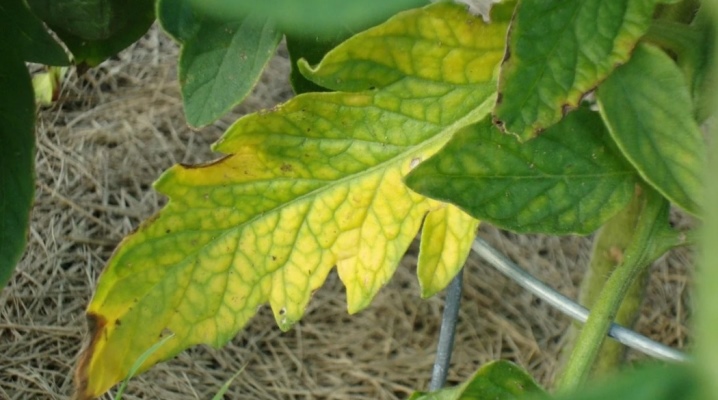
Many gardeners grow tomatoes. A homemade vegetable is much more aromatic, tastier and healthier than a store vegetable. However, the growing process itself is not that simple. Often in the open field, the leaves of tomatoes begin to turn yellow. In this case, you should urgently identify the necessary plant needs and take action.

Main reasons
Leaves can turn yellow at any stage of growing. It is very important to determine the cause, because this is the only way to save the plant.
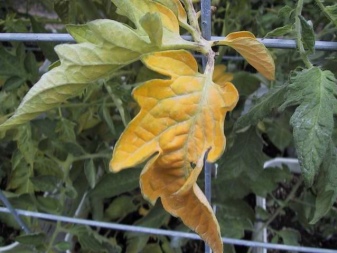
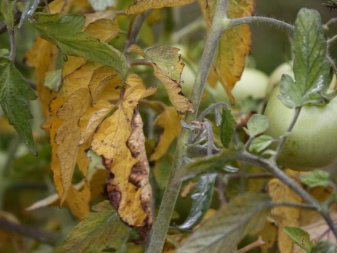
The leaves of tomatoes in the open field turn yellow for various reasons.
- Not enough space. Planting too tightly can lead to yellowing of the leaves. The plant simply cannot absorb the right amount of moisture and nutrients from the soil. And in such a situation, tomatoes do not have enough light.
- Insufficient lighting. In this case, the leaves turn yellow due to a violation of photosynthesis. Tomatoes should be planted on the sunny side of the garden. Light affects not only the state of the leaves, but also the quality and taste of the tomato itself.
- Improper watering. Lack of moisture is bad for the condition of the plant. Watering should be done regularly. The amount of water depends on the stage of development. Watering should be increased during flowering and at the beginning of the appearance of fruits.
- Damaged rhizome. In this case, the plant simply cannot absorb nutrients from the ground. As a result, the tops turn yellow. If the roots are damaged, then the lower leaves turn yellow. Watering and feeding will speed up the recovery process. Tomatoes usually bounce back in 1-2 weeks.
- Insufficient or too much fertilizer. If the plant is starving, the leaves curl and turn yellow. To improve the situation, it is necessary to apply mineral and organic fertilizers. For proper development, a plant needs a whole range of nutrients. The supply of magnesium, nitrogen, iron, potassium and chlorine should be ensured. Deficiency of each substance has its own symptoms. Without nitrogen, the tomato stretches out, the leaves remain small and turn yellow. At the same time, the veins on the second side are red-blue. With a lack of potassium, young leaves curl, and the rest turn yellow. Gradually they darken, the edges are covered with brown spots. With a lack of magnesium, yellowing occurs along the veins. But if there is not enough iron, the color changes near the base of the sheet. An insufficient amount of molybdenum causes the tops to turn light yellow. And also by appearance, you can determine the excess of phosphorus. In this case, the leaves turn yellow at the edges. The lower ones suffer more, they curl up rather quickly and die off.
- Hypothermia during transplant. Seedlings should be transferred to the soil correctly. If, after the procedure, the lower leaves began to become covered with yellow spots, then there was hypothermia.
- Diseases. Fungi are the most dangerous. Such diseases are actively spreading during a cold snap and high humidity. Yellowing can cause fusarium wilting. The fungus enters the plant through the root, which soon begins to rot. As a result, the leaves turn yellow and dry, and brown veins can be seen on the shoots. Viral diseases can also be dangerous. So, chlorotic curl, bacteriosis are not cured. The infected bush is dug up and burned to avoid spreading the disease.
- Pests. Insects break the integrity of the leaf plate and drink its juice. As a result, chlorophyll is lost, yellowness appears. Usually tomatoes are attacked by aphids, thrips, spider mites, bear, whitefly. Insects spread in damp thickets. The risk zone can be a dense planting or weed. If parasites are found, treatment should be carried out in the evening or in cloudy weather.

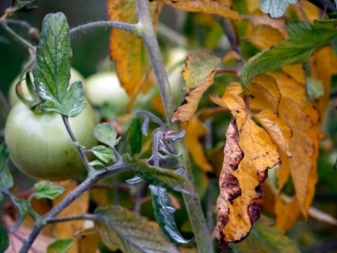
Identifying the cause of the yellowing of the leaves makes it possible to save the crop.
It happens that the tops change color. This may be due to the fact that the tomatoes burn too much in the sun. You should try one of the ways to solve the problem and evaluate the result. If yellow leaves or spots disappear, then the crop is saved.
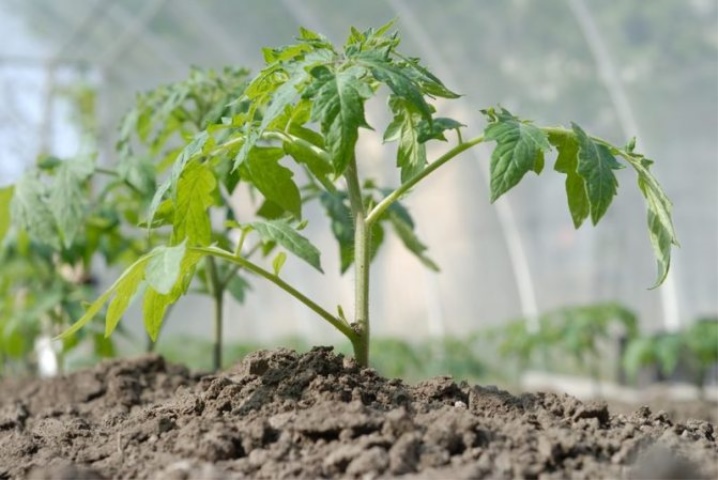
Solution
After identifying the cause of the yellowing, you need to do whatever is necessary to improve the situation. It is important that the tomatoes are initially planted in the correct pattern. The exact choice depends on the size of the bushes. The maximum distance between landings must be observed:
-
for low-growing tomatoes - 30-40 cm;
- for medium-sized bushes - 50 cm;
- for tall tomatoes - 60 cm and more.
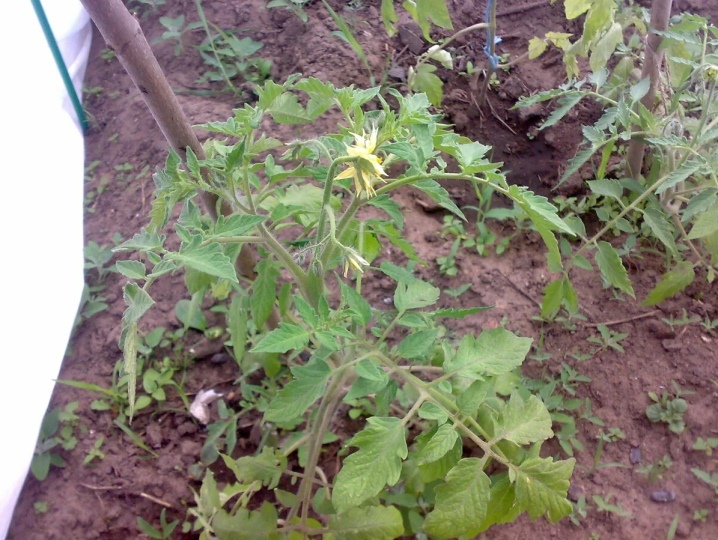
It is recommended to plant in a checkerboard pattern. So each bush will receive the maximum amount of solar heat and light. Taking care of tomatoes with this seating scheme is also much easier. Closely planted bushes need to be transplanted.
The work is carried out at a time when there is no scorching sun. It is better to replant before flowering. The bush should be pulled out together with an earthen lump and transferred to a new place. After that, the roots are covered and the plant is watered abundantly.

Correct care
Cover the tomatoes with paper caps immediately after planting in open ground. If it gets cold at night, then additionally the tomatoes are covered with agrofibre. It is important to choose the right planting time so that there is no hypothermia. Better to schedule an event for the end of April or May.
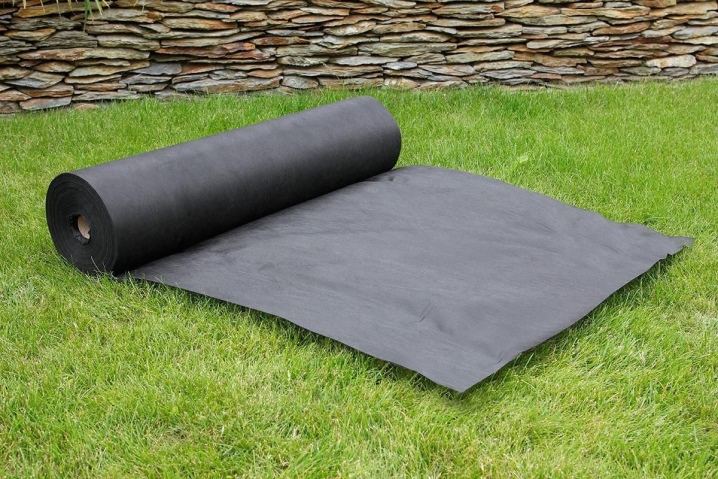
The exact time should be selected based on the characteristics of the weather conditions. Seedlings can be transferred to open ground as soon as the ground and air warm up. If there may be frosts ahead, then it is worth postponing the procedure. Non-woven fabrics help insulate the bushes.
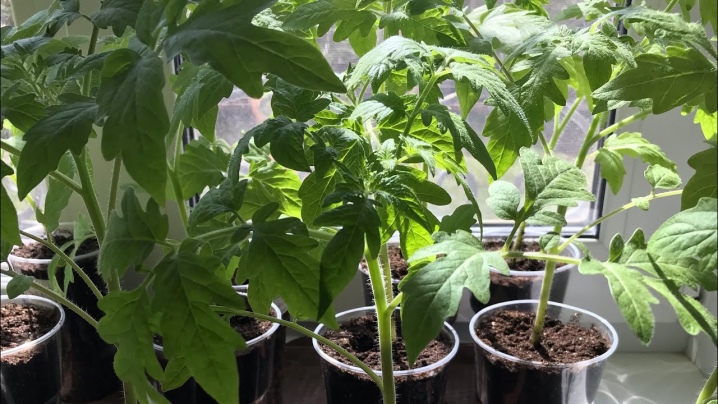
Regular watering is very important for tomatoes. Mulching the land with humus or peat will reduce the number of procedures. The extra layer will keep moisture in the soil longer. Water for irrigation is preliminarily collected in a barrel, heated in a greenhouse or in the sun, only then is it poured onto the beds.
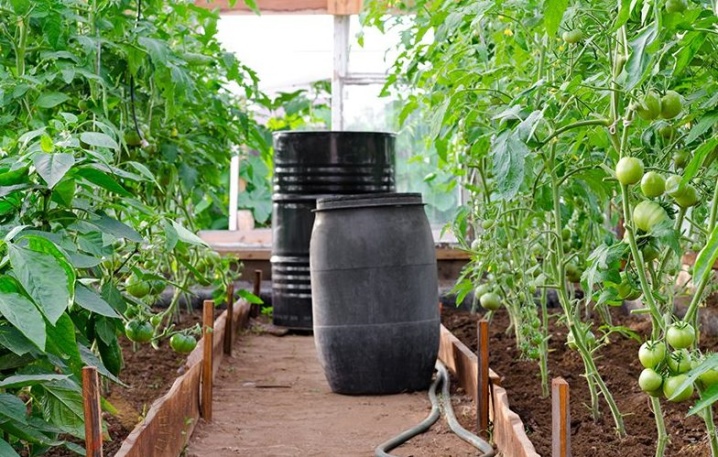
During morning or evening watering, it is important not to wash out the soil. There should be no water on the green part of the plant. After the procedure, you should loosen the soil. So the moisture will be well absorbed along with all the useful components from the soil.
Watering scheme:
- every 5 days, 4 liters per bush until fruit is formed;
- every 3 days, 3 liters per plant during fruiting.
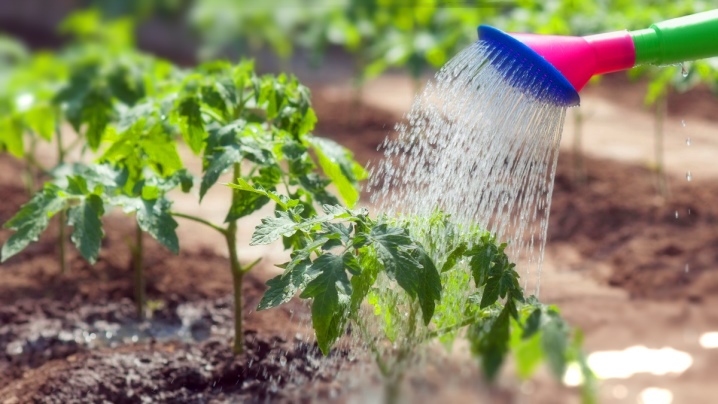
When ripe, watering decreases. At this time, yellowing of the tops is natural, not associated with problems and diseases.
In mid - late summer, wilting sets in. Dry and yellow leaves should be removed.
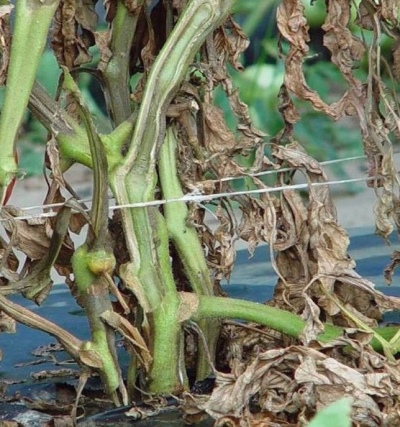
Treatment of diseases
Yellowing of the foliage is a specific symptom that tomatoes are affected by Fusarium, late blight. There are other diseases, but they are less common. First, you should diagnose and determine the exact disease. Then you can go directly to the treatment. If the disease is detected at an early stage, then it will be quite easy to overcome it.
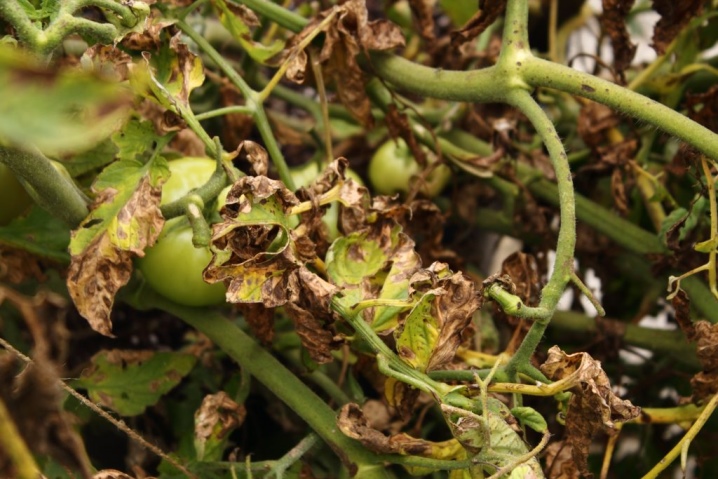
Fusarium develops due to the spread of the fungus. There is simply no specific treatment. The affected bush must be dug up and burned to protect the rest of the tomatoes. The main symptoms of fusarium are:
- all the leaves curl, turn yellow and begin to dry out;
- it is necessary to cut the stem - inside you can see streaks of brown;
- symptoms first appear on the lower part of the plant.
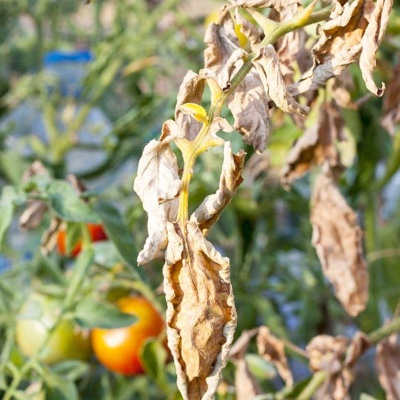
Late blight is even easier to recognize. The tops begin to dry out, becoming brownish-yellow in color.The disease develops as a result of late blight lesions. This fungal infection can spread from one bush to another.
Treating tomatoes is pretty simple.
- Remove all dry leaves. It is recommended that you burn them.
- Carry out treatment with one of the drugs: "Trichophyte", "Bravo", "Consento", "Fitosporin", "Quadris", "Kuproksat".
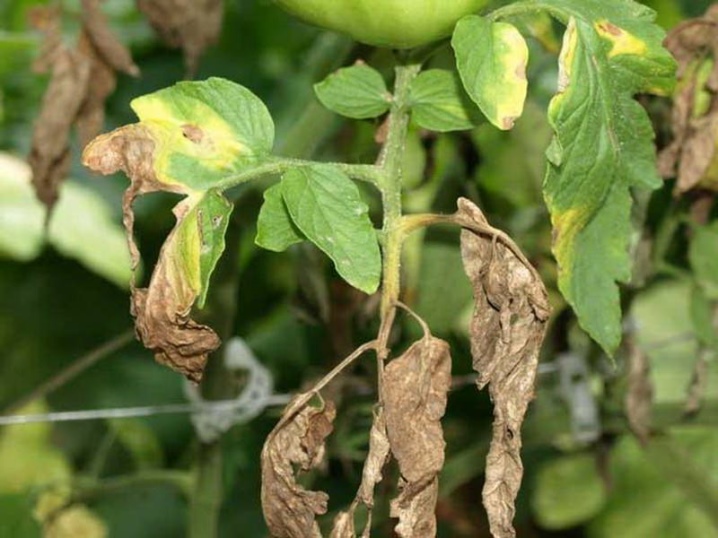
There are also folk recipes for the treatment of such a disease. First you need to prepare a milk-iodine solution. Add 0.3 liters of milk and 5 drops of iodine to 3 liters of water. The components are thoroughly mixed. The composition is used for spraying tomatoes.
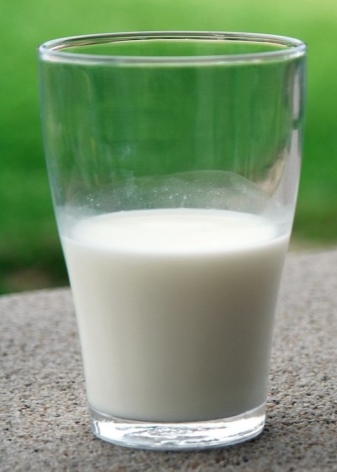

The easiest way to fight fungi is with chemicals. It is necessary to use preparations with copper, for example, "Topaz", "Oksikhom". Biological agents will be an alternative. You can try Gamair or Previkur. They will not accumulate in tomatoes, therefore they are completely safe for people.
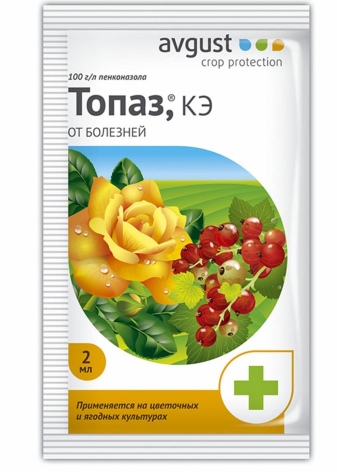

In any case, spraying is necessary for treatment. One treatment every 7 days is enough.
If the symptoms persist, and the bush is severely affected, you will have to resort to extreme measures. It is necessary to dig up the plant and burn it so that the disease does not spread to other crops.
Viral diseases are a great threat to tomatoes, due to which yellowness appears on the foliage. They cannot be cured, you will have to dig up and dispose of the entire bush. Such diseases include chlorotic curl... In this case, the top is deformed, and the leaves turn yellow or turn light green. The presence of mosaic yellow spots on the tops is a sure sign of a viral disease.
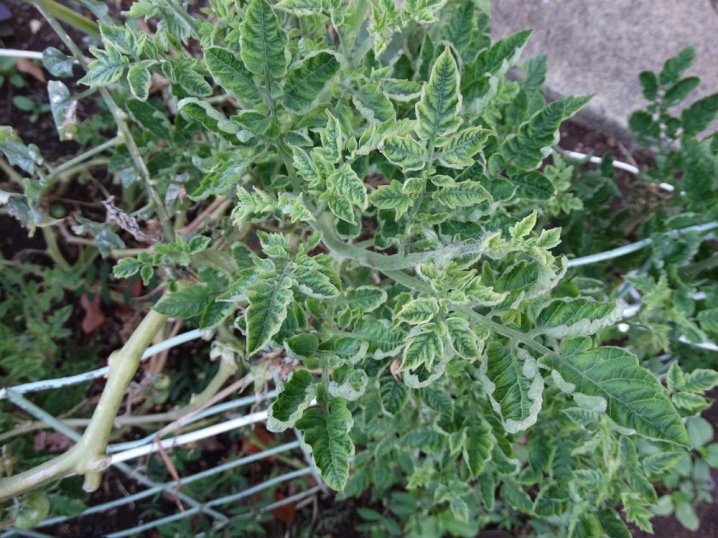
And also tomatoes are highly susceptible bacteriosis... The disease provokes a virus that contributes to the wilting of the bush. For diagnosis, you can break off the shoot. If there are dark spots and accumulations of fluid inside, then the diagnosis is correct. The bush should be dug up and burned, and the soil after it should be treated with Fitolavin.
Getting rid of pests
If insects appear on the tomatoes, then you should act immediately. If the fruiting period has not yet begun, insecticides are used. A good result is given by such drugs as Fitoverm, Aktara, Confidor. It is necessary to process at a time when there is no scorching sun.
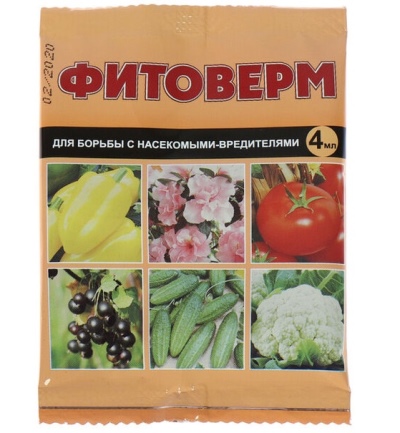
It happens that insects appear during the ripening of fruits and one should refrain from using chemistry. In such a situation, one can recall the folk methods. Pests do not tolerate the smell of ammonia, wormwood and garlic. On the basis of any component, you need to make an infusion and use it for spraying.
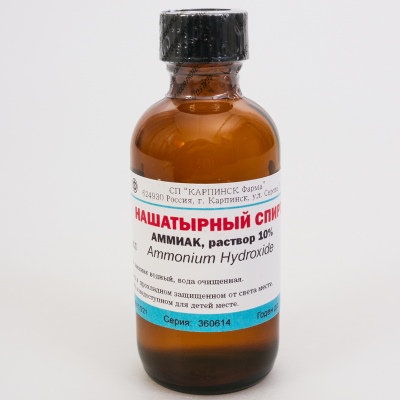
Prophylaxis
Compliance with agricultural techniques will avoid yellowing of the leaves. If tomatoes grow in a suitable microclimate, then they will develop correctly. In this case, the leaves will only wither naturally. We list the main preventive measures.
- You should plant varieties that are not afraid of temperature changes and are resistant to diseases.
- Compliance with the landing pattern is of great importance. Otherwise, fertilizer and water will not be absorbed by the plant in the right amount.
- Choosing the right spot in your garden will make it easier to care for your tomatoes.
- Watering should be appropriate for the stage of development of the plant.
- Loosening and mulching the soil will allow the tomatoes to develop properly.
- Weed weeding is very important. Weeds can simply block the culture from accessing everything useful in the soil.
- Regular feeding allows you to replenish the amount of nutrients in the soil. The regularity should coincide with the stage of development of the plant.
- It is important to form tomato bushes, tie them up if necessary.
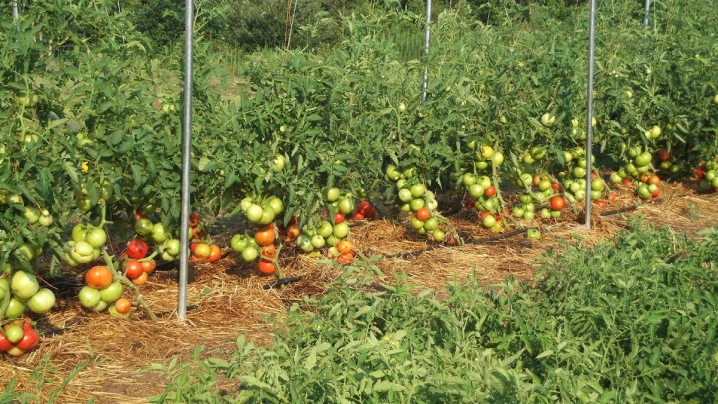
More attention should be paid to the prevention of diseases and insects. In the first case, you can use industrial preparations, fungicides. Popular among gardeners are Fundazol, Fitosporin and Ridomil. However, if before the ripening of the fruit is less than 3 weeks, then it is better to give preference to folk remedies.
The easiest way is to make an infusion based on ash and sprinkle tomatoes with it.
Systematic treatments help protect plants from pests. It is important to use drugs that do not accumulate in fruits and leaves. Many people prefer drugs such as Fitoverm or Agravertin. In the fall, you should dig up the beds, then the insect larvae will be on the surface and will not survive the cold.
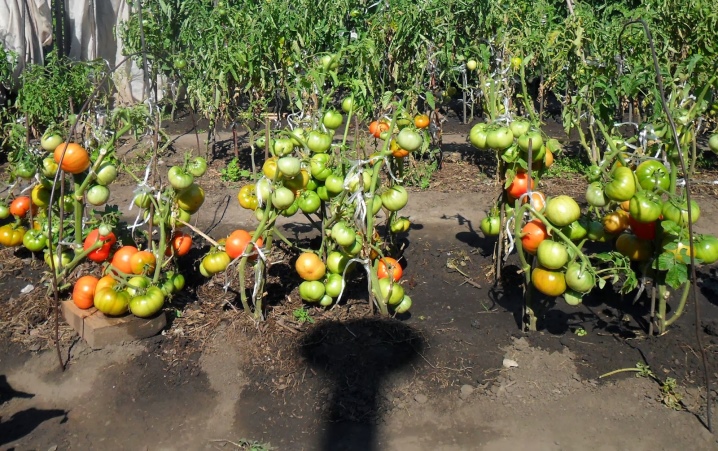
You can also scare away insects with folk remedies. Most of the pests do not tolerate tobacco dust, calendula, marigolds, onion husks. On the basis of such plants, you can make tinctures and spray tomatoes with them. Calendula and marigolds can even be planted next to the beds. Pests are frightened by their smell.
For information on what to do if the leaves of tomatoes turn yellow, see below.













The comment was sent successfully.